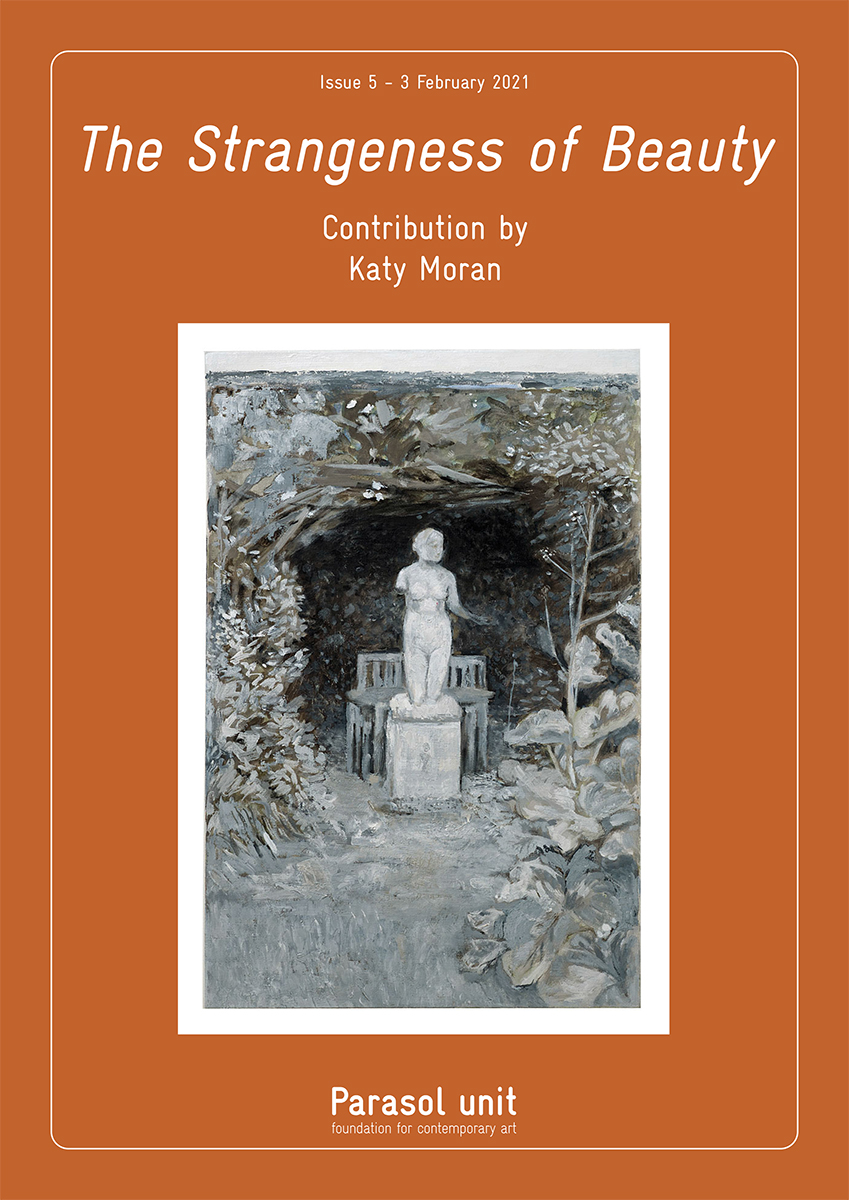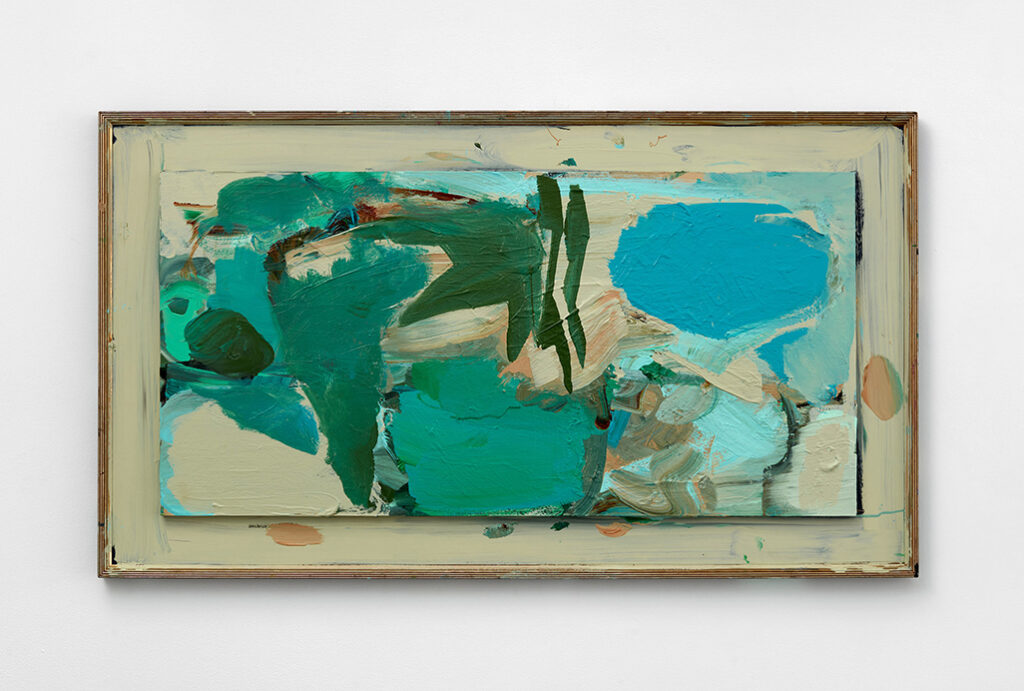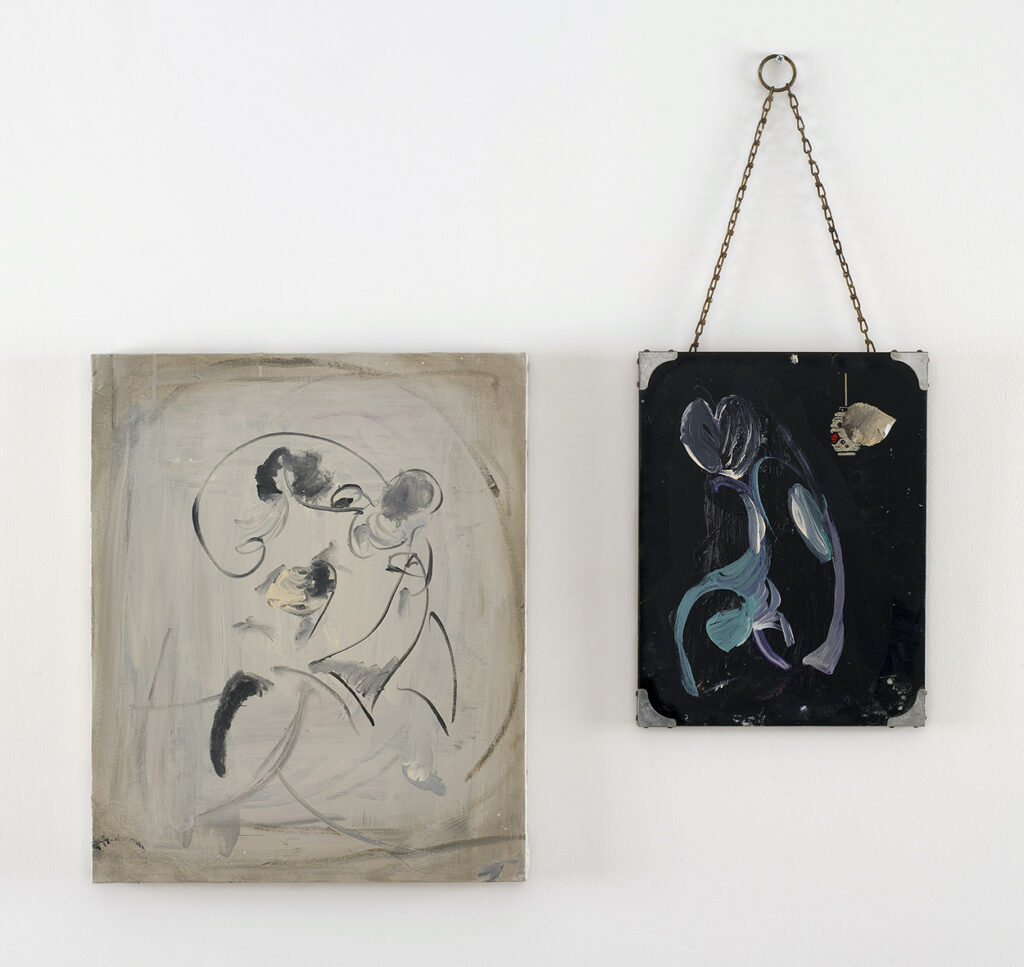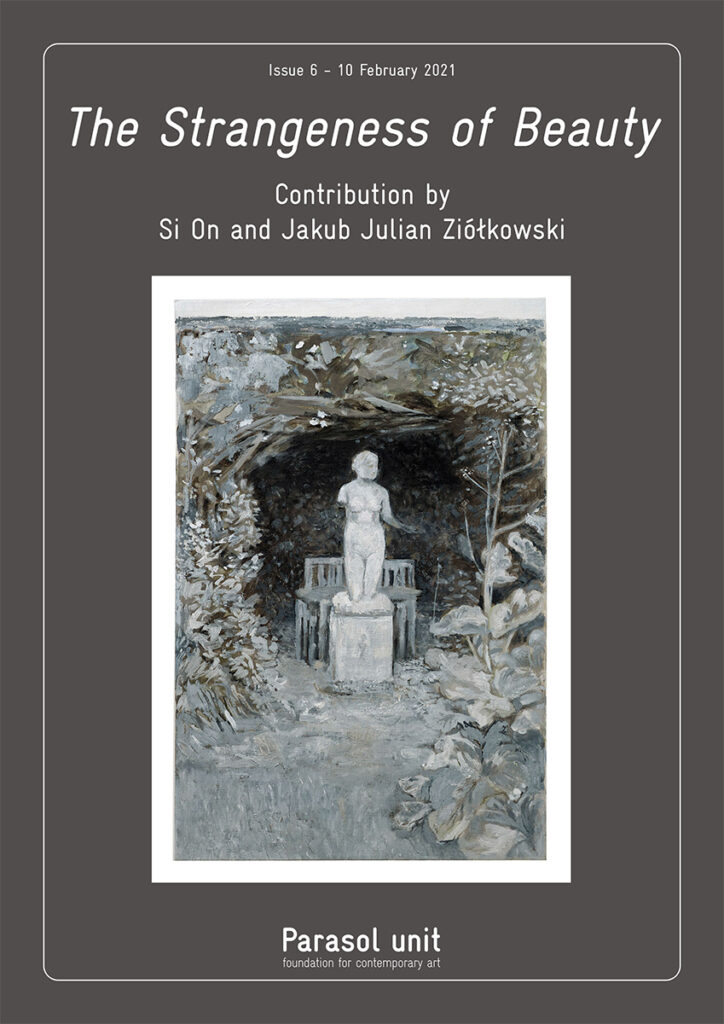
The Strangeness of Beauty – Issue 5 – Katy Moran
3-9 February 2021
View the full issue
The Beauty of Truth
Beauty is truth, truth beauty, – that is all
Ye know on earth, and all ye need to know.
John Keats, in ‘Ode on a Grecian Urn’, 1819
In an essay by Professor Colin Ives of Oregon State University he writes: ‘The idea that beauty is “right” and “true” has been around since humankind developed abstract thought. The Latin phrase Pulchritudo splendour varitatis (beauty is the splendour of truth) is thousands of years old and suggests that beauty and truth are interrelated.’ Later in the text he notes that ‘beauty and truth are both incredibly evasive and abstract terms’ as beauty, in particular, is not a property of an object, but an observer’s response to the qualities of that object.¹
Since by truth we often mean absolute truth, which could mean a scientifically proven truth, it might be interesting to look at the undoubtedly beautiful double helix. This twisted-ladder structure of the DNA molecule made entry into the field of molecular biology possible. Its discovery in 1953 was the result of the important teamwork for which James Watson, Francis Crick and Maurice Wilkins received the Nobel Prize in Physiology or Medicine, 1962. Had she lived, Rosalind Franklin too would have been one of the Nobel Prize laureates for the significant research she contributed to understanding the structure of DNA.

Image by Arek Socha from Pixabay
In his book The Art Instinct, the philosopher Denis Dutton suggests that when it comes to art, the personal expression, emotion, fantasy and imagination of the artist at the very moment of making is key to creating a true artwork. This might explain why any two of Monet’s paintings of water lilies are not the same and why a fake artwork, despite being perfectly executed, will remain fake. Many of us know that the conceptual artist, Sol LeWitt of the mid-twentieth century usually left the execution of his celebrated wall drawings to his assistants, and said towards the end of his life, ‘If anyone asks, tell them my best artwork is yet to come.’ Indeed, Sol LeWitt’s statement says far more about conceptual art than the usual rhetoric of defining it as the art of ideas.
For an artwork to be an original or true expression of an artist’s thoughts and ideas, it must involve taking risks. Recalling Thomas Hirschhorn’s essay in the first issue of The Strangeness of Beauty we understand that artists usually intend to create a beautiful artwork and a work that is a true expression of their thinking, feeling, and consequent ideas. These are exactly the qualities that impressed me in the works of Katy Moran when I originally saw them several years prior to inviting her to show her work at Parasol unit, first in a group show in 2010, and subsequently in a solo show in 2015. At the time, apart from being interested in her work, I remember having been impressed by her courage and determination to take risks in order to make each painting reflect her personal expression and decisions.
Ziba Ardalan
Founder, Artistic and Executive Director
¹ Colin Ives, Prof., University of Oregon, USA, A Beautiful Theory: the Relationship between Beauty and Scientific Truth. english.uoregon.edu, accessed January 2021.
John Keats quote contribution by Helen Wire.
Katy Moran
Oddity

Katy Moran, Lockdown Lynn, green, 2020. Acrylic on board in found frame. 61 x 108 cm (24 x 42½ in).
Copyright Katy Moran. Courtesy the artist and Modern Art, London. Photography by Robert Glowacki.
It makes me think of a time early on in my career when I would make paintings and I could see where they would fit, they were recognisable, respectable paintings, reminiscent of this or that artist. I could have left it there. But in my mind I saw painting like the card game of Pontoon when I had 17 or 18. I could win with that hand but the temptation was to push it to see if I could get 21, knowing that I may lose everything in the process.
The oddity part came in when, on my way to taking a chance on getting 21, I wanted to push it beyond recognisability. I wanted to push it into such an odd territory, I wouldn’t know what the heck to make of it, and I would look and look at it and just not know. It would take quite a while to become accustomed to it, to know if it had worked – all in the hope that I might be making something fresh.
Similarly, when I find old paintings in salvage shops to paint over, I like to find odd things that spike my curiosity and I just don’t know what to make of them. Is it good painting or bad painting, is it good taste or bad taste? Beautiful or ugly? I saw some in a hospital once and they provoked such a strong reaction of oddness and ugliness that I couldn’t stop looking at them. Then I actually turned full circle and started to ask myself if they were great.
Beauty for me was seeing Howard Hodgkin’s last paintings from India in an exhibition just after he died. The power of every scuffle and drip on the canvas, those accidental traces of the artist’s presence and life’s breath suspended in the painting, the poignancy of that.

Katy Moran, Jaguar Nights, 2008. Acrylic on canvas and board in 2 parts. 46 x 38 cm (18¼ x 15 in) 32.7 x 25.2 cm (13 x 10 in).
Copyright Katy Moran. Courtesy the artist, Modern Art, London, and Private collection.
Beauty to me currently is the idea that we could witness the painter articulating themselves fully, freely and fearlessly in paint, that they have harnessed such a command of the language of paint and plurality that they can use it to express themselves as lucidly as any great writer or conversationalist.
In this way the painter is able to give you and to reflect back to you what it is to be alive and to do so in a way that is optimistic and life affirming.
There may be a feeling that beauty means compromising rigour. I used to feel that using complementary colours in my painting would be a cop-out, an easy way to get an effect. I didn’t want to rely on a strategy or a proven aesthetically pleasing tool, as say the pentatonic scale would be in music. However, I bring it in now, I think about beauty and the potential healing power of colour and paint but I want to utilise these elements in addition to rigour.
Next Issue
The Strangeness of Beauty
Issue 6, 10 February 2021
Featuring contributions by
Si On and Jakub Julian Ziółkowski


